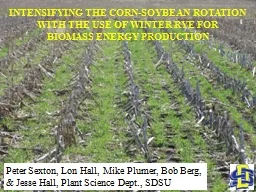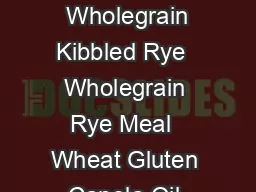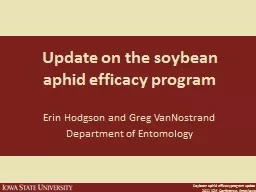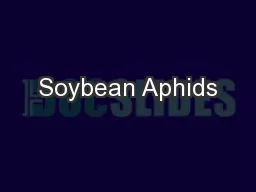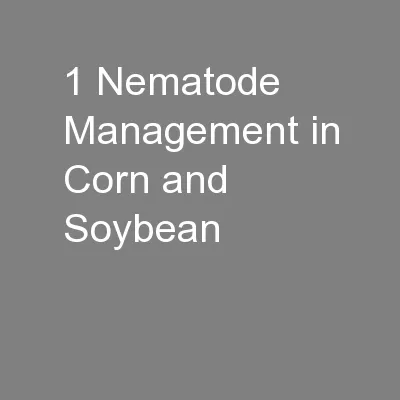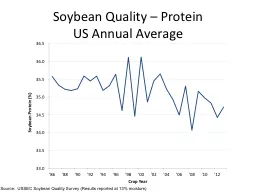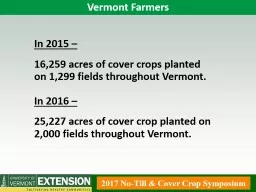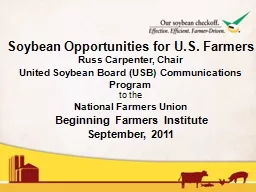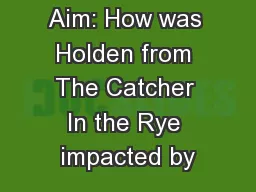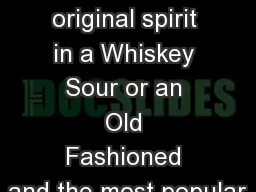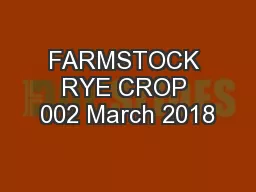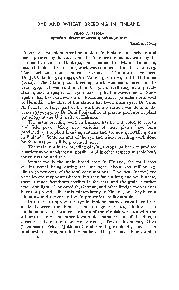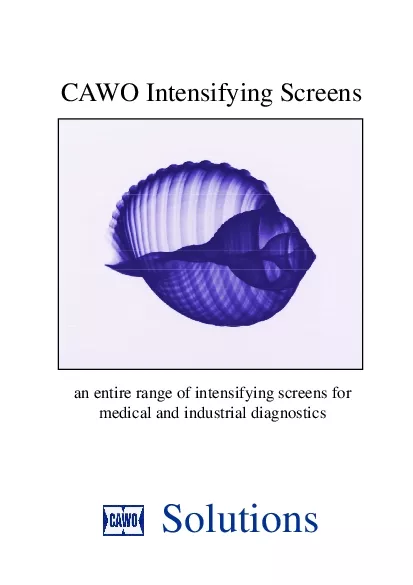PPT-INTENSIFYING THE CORN-SOYBEAN ROTATION WITH THE USE OF WINTER RYE FOR
Author : conchita-marotz | Published Date : 2018-10-26
BIOMASS ENERGY PRODUCTION Peter Sexton Lon Hall Mike Plumer Bob Berg amp Jesse Hall Plant Science Dept SDSU Corn Soybean Timeline Advantages of growing rye between
Presentation Embed Code
Download Presentation
Download Presentation The PPT/PDF document "INTENSIFYING THE CORN-SOYBEAN ROTATION W..." is the property of its rightful owner. Permission is granted to download and print the materials on this website for personal, non-commercial use only, and to display it on your personal computer provided you do not modify the materials and that you retain all copyright notices contained in the materials. By downloading content from our website, you accept the terms of this agreement.
INTENSIFYING THE CORN-SOYBEAN ROTATION WITH THE USE OF WINTER RYE FOR: Transcript
Download Rules Of Document
"INTENSIFYING THE CORN-SOYBEAN ROTATION WITH THE USE OF WINTER RYE FOR"The content belongs to its owner. You may download and print it for personal use, without modification, and keep all copyright notices. By downloading, you agree to these terms.
Related Documents

